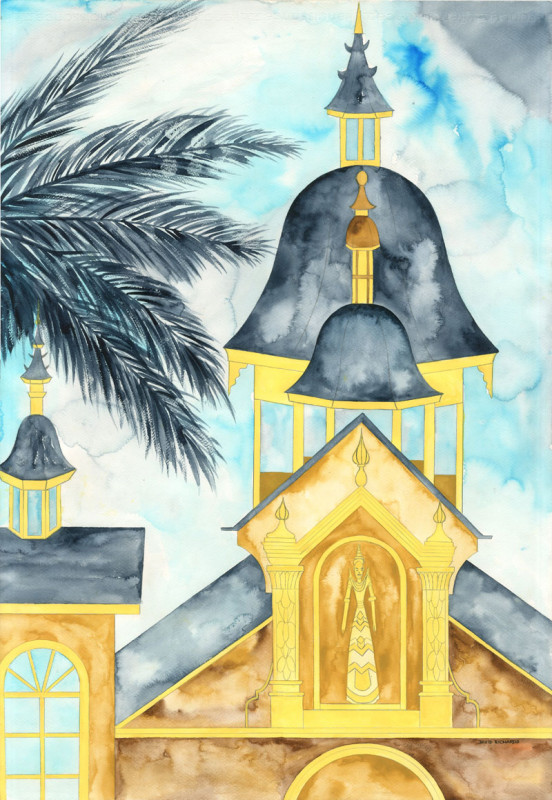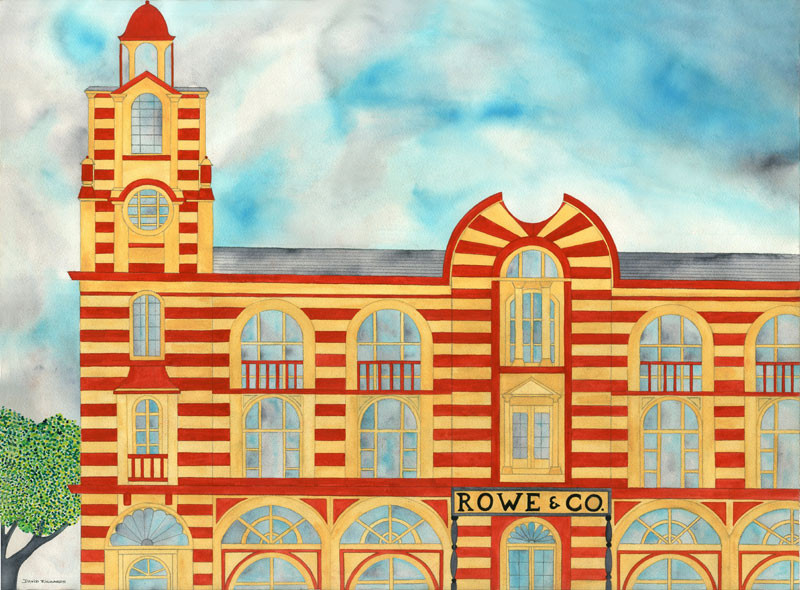David Richards takes a painstaking approach to his art and also brings with him the passion of a historian, focusing on the turn of the 19th century in Indochina and the region—not for the politics but for the architecture.
“That era fascinates me,” he said. “Buildings aren’t made like that anymore.

(David Richards)
“Modern structures are all square, rectangular, glass and steel, really missing all the curves. The colonial architecture is full of circles and curves. French architecture is all curves. So is British architecture with all the domes and circular windows and archways that are curved. To me, this was the golden age of architecture.”
This passion led him to research and photograph Indochina-era buildings—constructed when Cambodia, Laos and Vietnam were administered by France in the late 19th and early 20th centuries—when he first moved to Cambodia in the mid-1990s. After relocating to Phnom Penh again in 2007, he systematically painted the buildings and in 2011 held an exhibition of 67 detailed watercolors, some of the buildings in Cambodia that have since been demolished.
Then, during a trip to Rangoon in 2012, he came across a wealth of colonial-era buildings in that city. “The best comparison with here would be the area around the Central Post Office in Phnom Penh,” he said.
“The city center in Yangon is entirely like that, the whole city center. So it encompasses a much larger area and with an incredible concentration of colonial buildings,” Mr. Richards said.

He later learned that central Rangoon is considered to have one of Asia’s largest remaining concentrations of colonial buildings.
When Burma’s military rulers relocated the capital to Naypyidaw in the mid-2000s, the colonial-era buildings that had housed government offices in Rangoon were basically abandoned, Mr. Richards said.
“The amazing thing, though, is that, because they were built so well…even neglect didn’t destroy them,” he said. “They’re so structurally strong that most of these buildings can be fully restored from this point forward. And some are.”

A few months after his trip, Mr. Richards moved to Rangoon for the sole purpose of documenting and painting its buildings. He lived there for three years, working as an arts teacher in a private school, and studying and photographing colonial buildings with the aim of painting them later.
He returned to Phnom Penh in March, and has continued to work on his watercolors on Rangoon. This series of 75 paintings, which includes a few scenes of more modern bars and cafes in Rangoon, entitled “Yangon in Tran- sition, Past and Present,” is now on display at The Plantation hotel. The exhibition runs through December 6.
Mr. Richards was born in 1952 in the U.S. He studied art in university, then went on to design gardens in California, then worked for an upscale art gallery in Hawaii before moving to Phnom Penh, where he now teaches English at a private university.




